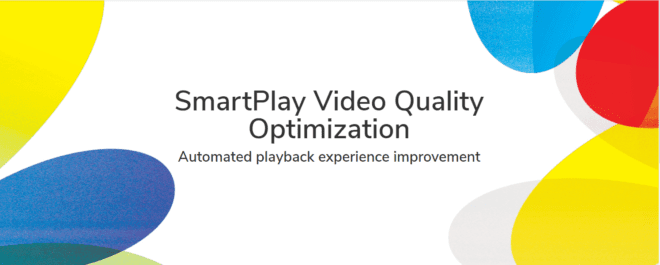We’re all aware of the sudden need to reduce streaming bandwidth to alleviate congestion. MediaMelon’s SmartPlay/QBR is a very viable option for this that was recently adopted by Brazilian OTT producer Telecine.
I reviewed MediaMelon’s QBR technology for Streaming Media Magazine back in 2017. I called it a “server-side, per-title delivery mechanism.” Unlike traditional per-title technologies that re-encode your files into a more efficient encoding ladder, QBR works with your existing ladder, saving the time and expense of re-encoding. It analyses all rungs over the life of the video, and when your 1080p@4.5 Mbps stream delivers the same quality as your 1080p@6 Mbps stream, it delivers the lower bitrate, even if the viewer has the bandwidth to retrieve the 6 Mbps stream.
Back in 2017, QBR performed well, but could only work when all rungs in the ladder used the same resolution, which made it unworkable for most companies. MediaMelon fixed this in 2018 and now markets QBR under the name SmartPlay. MediaMelon recently announced a deal with Telecine, a joint venture between Globo and Hollywood Studios Paramount, MGM, Universal, and Fox, under which Telecine deployed SmartPlay.
The press release states that “With SmartPlay, Telecine..lowered the bandwidth needed to carry its streams by 42%, improving visual quality and reducing streaming interruptions (buffering) by 50%.” Again, the key advantage SmartPlay has over traditional per-title techniques is that it works without re-encoding, making it faster and cheaper to deploy. I haven’t tested the technology recently, and know nothing about the commercial terms, but it’s worth a look if you’re trying to quickly cut bandwidth costs without re-encoding.
 Streaming Learning Center Where Streaming Professionals Learn to Excel
Streaming Learning Center Where Streaming Professionals Learn to Excel










How did the solve the resolution issue?
Good question. I really don’t know; I’m guessing that they updated their video quality metric to incorporate multiple resolutions like other metrics can. As I mentioned, I haven’t tested the system since the review and felt it was blog-worthy because of the need to conserve bandwidth.